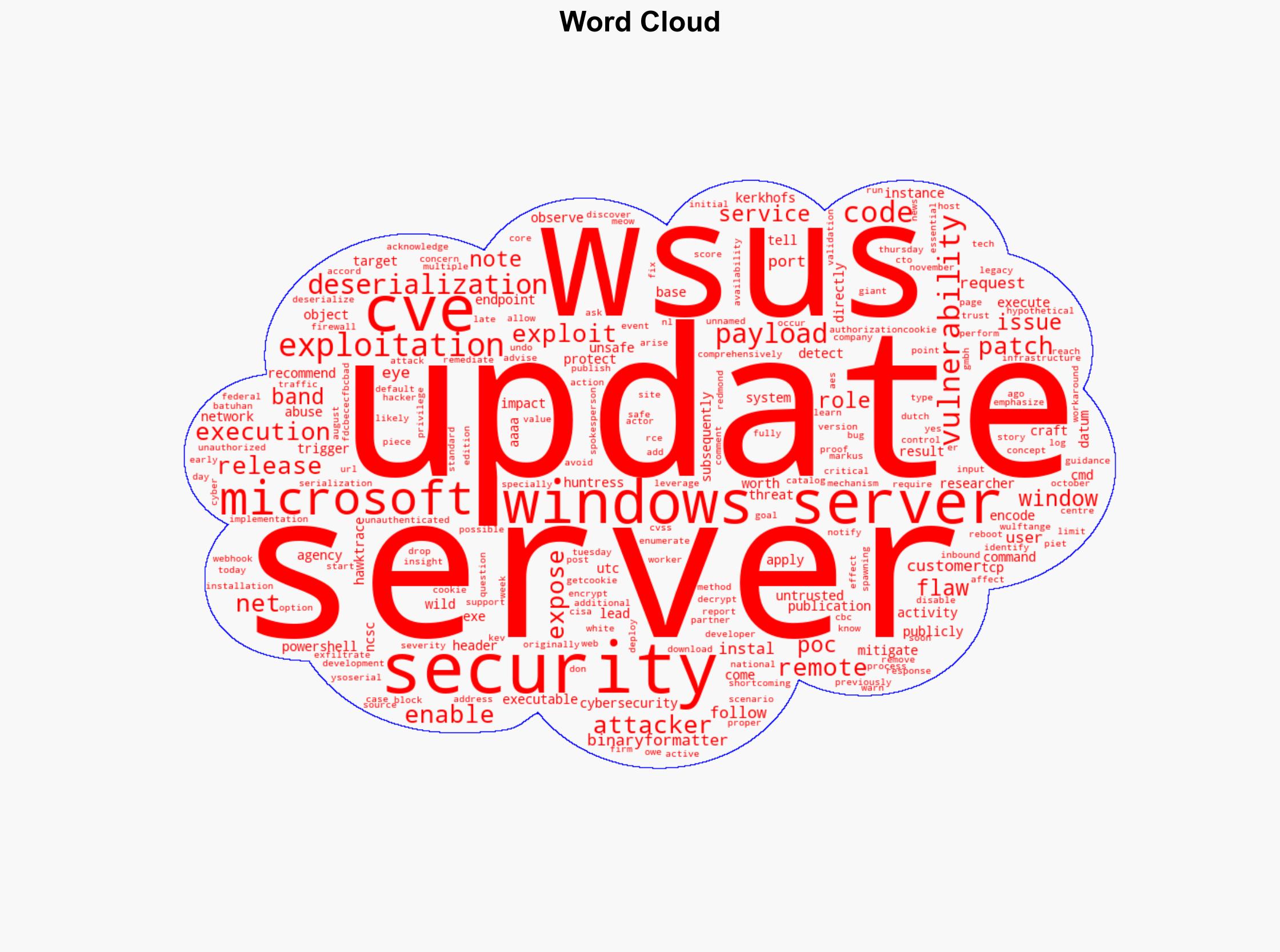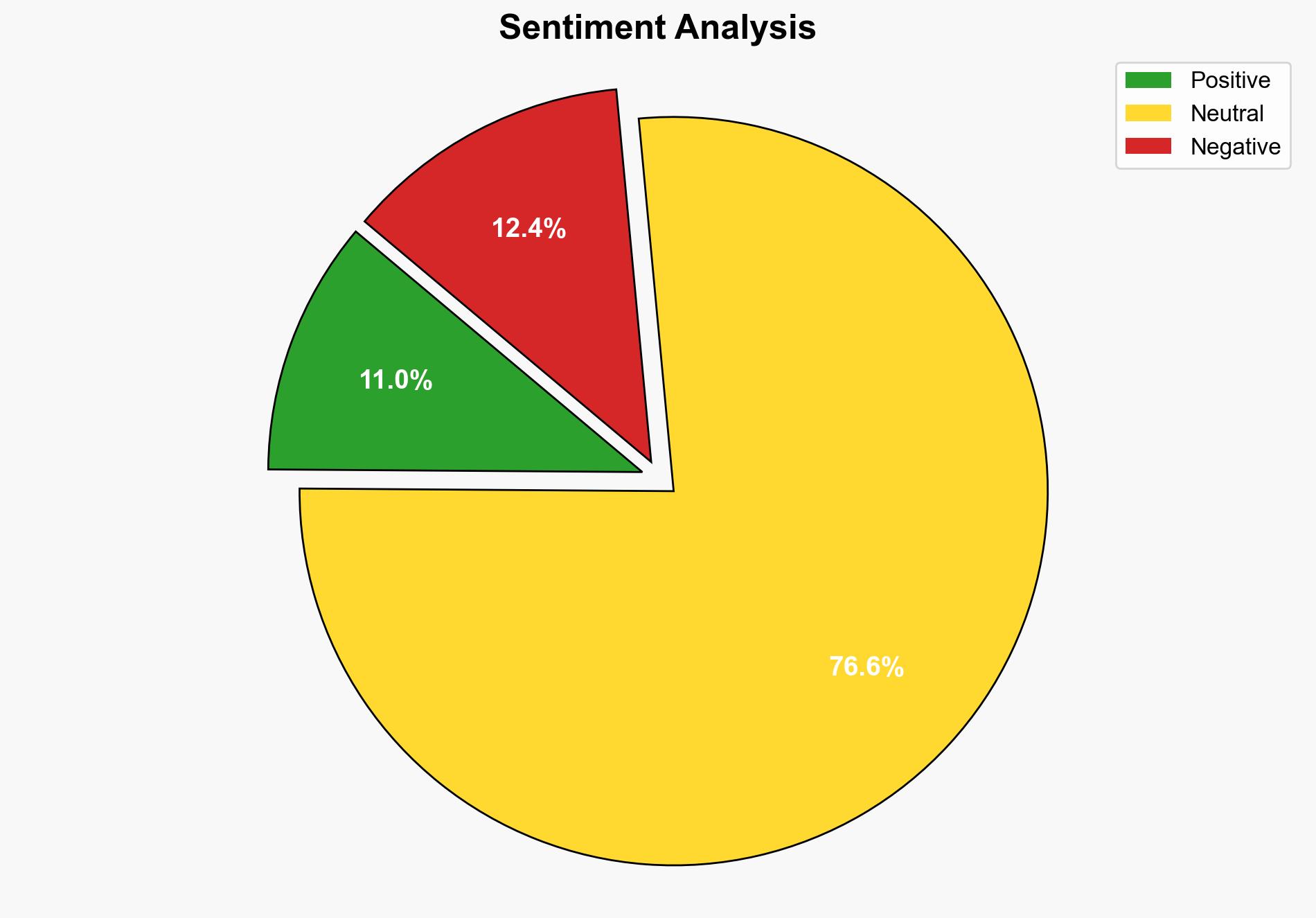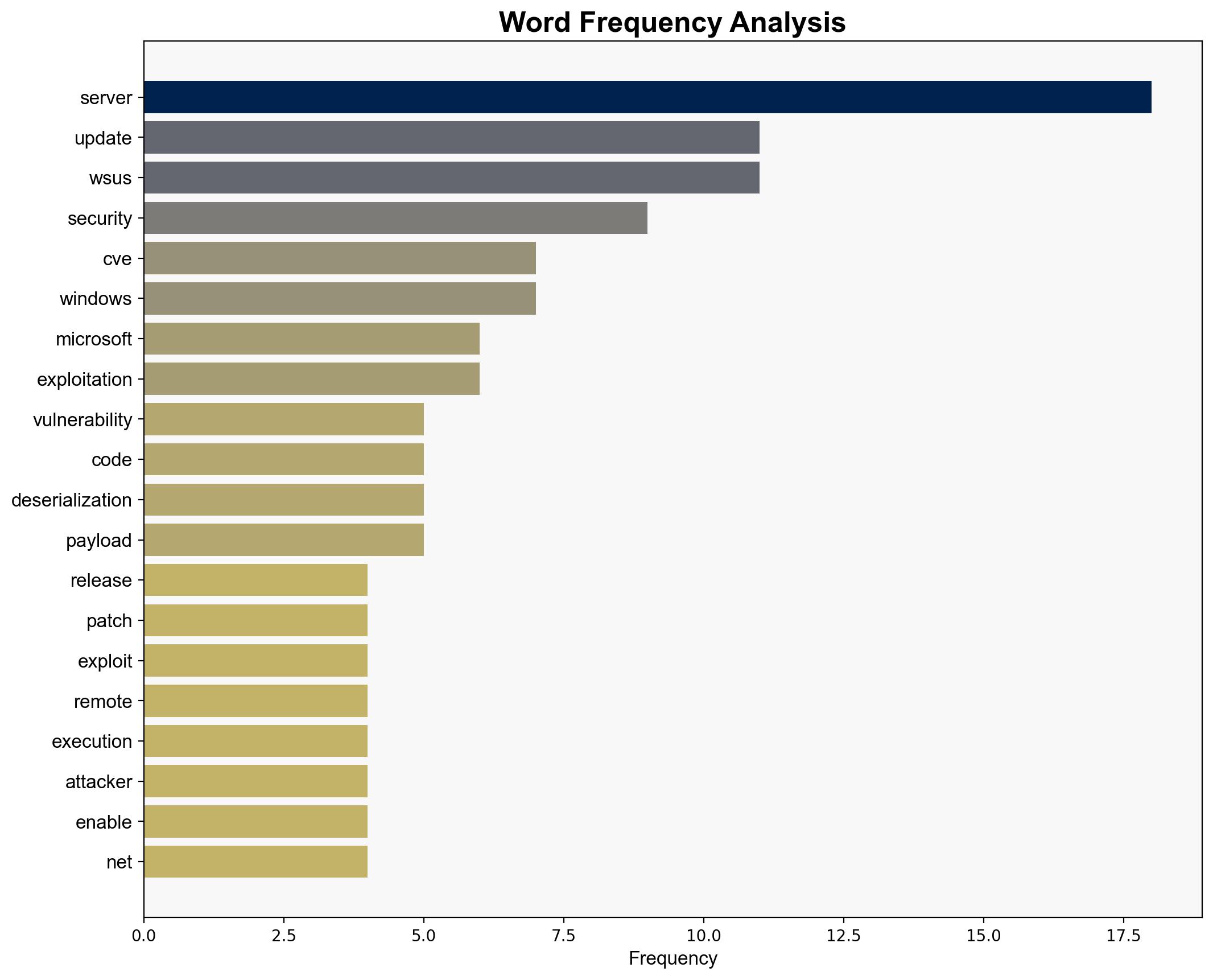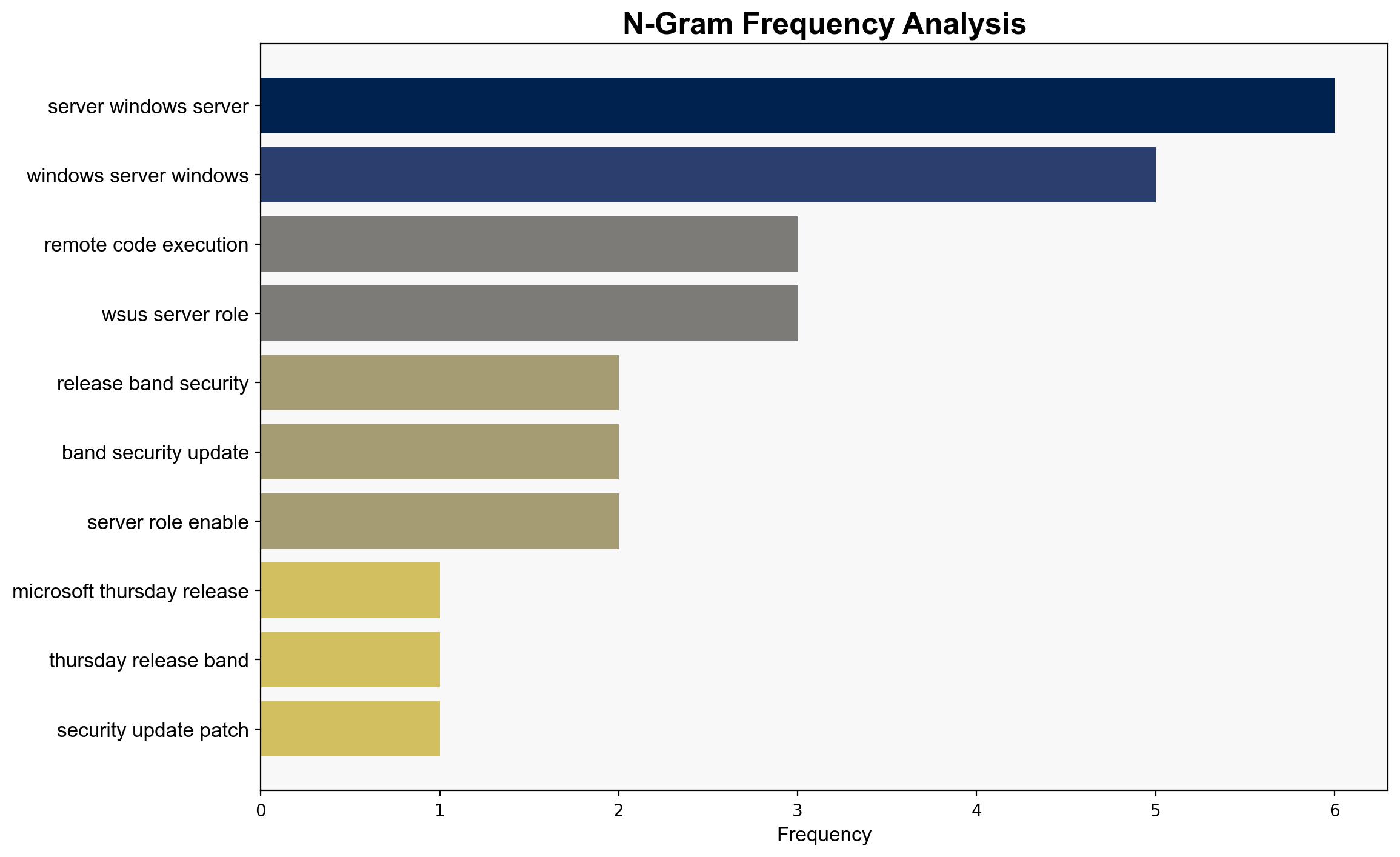Microsoft Issues Emergency Patch for Actively Exploited Critical WSUS Vulnerability – Internet
Published on: 2025-10-24
Intelligence Report: Microsoft Issues Emergency Patch for Actively Exploited Critical WSUS Vulnerability – Internet
1. BLUF (Bottom Line Up Front)
The most supported hypothesis is that the WSUS vulnerability is being actively exploited by cybercriminals to gain unauthorized access to systems, posing a significant cybersecurity threat. Confidence level: High. Recommended action: Immediate application of Microsoft’s emergency patch and enhanced monitoring of network traffic for signs of exploitation.
2. Competing Hypotheses
1. **Hypothesis A**: The WSUS vulnerability is being actively exploited by cybercriminals to gain unauthorized access to systems, leveraging the flaw for remote code execution and data exfiltration.
2. **Hypothesis B**: The reports of active exploitation are exaggerated, and the vulnerability is primarily a theoretical risk with limited real-world impact due to mitigations already in place.
Using the Analysis of Competing Hypotheses (ACH) 2.0, Hypothesis A is better supported due to multiple independent reports of active exploitation, including confirmation from cybersecurity firms and the Dutch National Cyber Security Centre (NCSC). Hypothesis B lacks substantial evidence and contradicts observed exploitation patterns.
3. Key Assumptions and Red Flags
– **Assumptions**: It is assumed that the reports from cybersecurity firms and NCSC are accurate and reflect widespread exploitation. It is also assumed that the emergency patch effectively mitigates the vulnerability.
– **Red Flags**: The rapid release of a patch suggests urgency, but the lack of detailed information on the identity of attackers or specific targets introduces uncertainty. There is a potential cognitive bias towards overestimating the threat due to the high-profile nature of the vulnerability.
4. Implications and Strategic Risks
The exploitation of this vulnerability could lead to significant data breaches, loss of sensitive information, and potential disruption of critical services. Economically, organizations may face increased costs due to incident response and system downtime. Geopolitically, state-sponsored actors could exploit the vulnerability for espionage, increasing tensions in cyber diplomacy. Psychologically, the exploitation may erode trust in software security and vendor responsiveness.
5. Recommendations and Outlook
- **Immediate Action**: Apply Microsoft’s emergency patch across all affected systems and conduct a thorough audit of network traffic for signs of exploitation.
- **Long-term Strategy**: Develop a robust incident response plan and enhance cybersecurity training for IT staff to recognize and mitigate similar threats.
- **Scenario Projections**:
- **Best Case**: The patch is widely applied, and exploitation attempts decrease significantly.
- **Worst Case**: Exploitation continues unabated, leading to major breaches and operational disruptions.
- **Most Likely**: Exploitation persists at a reduced rate as organizations gradually implement the patch and improve defenses.
6. Key Individuals and Entities
– Markus Wulftange, who discovered the vulnerability.
– Batuhan Er, security researcher at Hawktrace.
– Piet Kerkhofs, CTO at Eye Security.
7. Thematic Tags
national security threats, cybersecurity, counter-terrorism, regional focus





